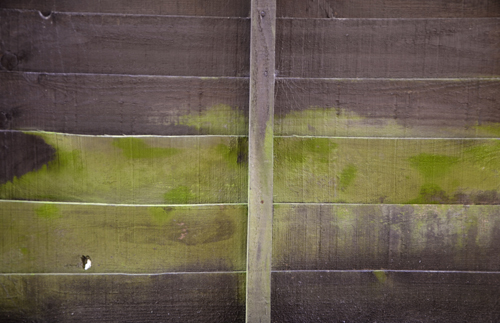
Cleaning, staining, or painting your wooden fence in the spring is a great way to refresh its appearance and protect it from the elements. Our Ohio weather can be rather uncertain so it’s best to plan the project every year. Here’s some advice to help you tackle this project effectively:
- Cleaning the Fence:
- Start by removing any debris, dirt, or mold from the surface of the fence. You can use a pressure washer with a low-pressure nozzle attachment to gently clean the wood without damaging it. Alternatively, you can scrub the fence with a mixture of mild detergent and water using a soft brush or sponge.
- Pay special attention to areas with stubborn stains or mildew growth. For tough stains, you can use a commercial wood cleaner or a solution of bleach diluted with water. Be sure to rinse the fence thoroughly with clean water after cleaning to remove any residue.
- Inspect for Damage:
- While cleaning the fence, take the opportunity to inspect it for any signs of damage, such as rot, decay, or loose boards. Replace any damaged or rotten wood and tighten any loose screws or nails to ensure the structural integrity of the fence.
- Staining the Fence:
- If you prefer a natural look for your wooden fence, staining is a great option. Stain penetrates the wood to enhance its natural beauty while providing protection against UV rays, moisture, and mildew.
- Choose a high-quality exterior wood stain that is specifically formulated for use on fences and follow the manufacturer’s instructions for application. Use a brush, roller, or sprayer to apply the stain evenly to the surface of the fence, working in small sections at a time.
- Allow the stain to dry completely according to the manufacturer’s recommendations before applying additional coats if desired. Be sure to apply enough stain to saturate the wood and provide adequate protection.
- Painting the Fence:
- If you prefer a more colorful or opaque finish for your fence, painting is a good option. Paint forms a protective barrier on the surface of the wood, shielding it from moisture, UV rays, and other environmental factors.
- Choose a high-quality exterior paint that is designed for use on wood and suitable for outdoor applications. Select a color that complements your home’s exterior and landscaping.
- Prepare the surface of the fence by sanding any rough areas and applying a primer if necessary. Use a brush, roller, or sprayer to apply the paint evenly to the surface of the fence, working in the direction of the wood grain.
- Allow the paint to dry completely between coats, and apply multiple coats as needed to achieve the desired coverage and durability.
- Protect Surrounding Areas:
- Before you start cleaning, staining, or painting your fence, take steps to protect surrounding plants, grass, and other surfaces from overspray or runoff. Cover nearby plants with plastic sheeting or drop cloths, and use a tarp or cardboard to protect the ground from drips and spills.
By following these steps and taking the time to properly clean, stain, or paint your wooden fence in the spring, you can enhance its appearance and prolong its lifespan, ensuring years of beauty and enjoyment for your outdoor space.
Fencing in Columbus Ohio Call Kelly’s Fence Company Today for a Free Estimate

